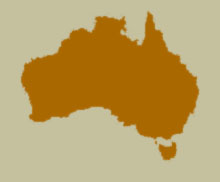Synonyms
Serangium howdenorum Slipinski and Burckhardt, 2006: 42.
Diagnosis
The species is easily recognised by its large and narrowly separated eyes, uniformly black dorsum with sparse setae along elytral margins and its length exceeding 2 mm.
Description
Length 2.2-2.5 mm. Pitch black dorsally, dark reddish brown ventrally; head and femora brown, tibiae and tarsi dirty yellowish. Winged; body shape hemispherical; pronotal margins visible from above in posterior half, pronotum with distinct rim anteriorly, laterally and posteriorly; elytra with inconspicuous swelling near humeral edge; elytral margins with narrow rim, entirely visible from above. Head, pronotal and elytral surface shiny; head impunctate except for area between eyes, covered in long sparse setae. Pronotum irregularly covered in sparse fine puntures and long sparse setae. Scutellum elongate, triangular, flat, shiny, glabrous. Elytra very finely punctate with a few long setae in basal third and a row of evenly spaced setae along margin. Head with large eyes, separated by 1.0 times eye width; flattened medially. Clypeus flat, long, straight anteriorly. Terminal maxillary palpomere moderately broad, oval, obliquely truncate apically, terminal labial palpomere narrow and aciculate. Antenna 9-segmented, scape expanded apically, club elongate, inner margin convex, apex angular. Prosternum mat, surface weakly furrowed, sparsely setose; mesosternum shiny, impunctate; metasternum shiny, impunctate with a group of setae in the middle. Elytral epipleuron yellowish, broad, excavate and angled to elytron in anterior half, with some long setae, narrowing to a mere rim in apical half. Anterior margin of profemur distinctly angled in apical third. Tarsus 4-segmented. Abdomen: ventrite 1 large, shiny with punctures and setae in the middle; ventrites 2-5 small, shiny impunctate and bearing a few long setae. Last ventrite not grooved laterally.
Male
Male genitalia as figured.
Female
Externally identical to male.
Variation
Not observed.
 Distribution and Biology
Distribution and Biology
Northern Queensland.
Species References
Slipinski, A. and Burckhardt, D. 2006. Revision of the Australian Coccinellidae (Coccinellidae). Part 5. Tribe Serangiini. Annales Zoologici (Warszawa), 56(1): 37-58.
[ Top ]
